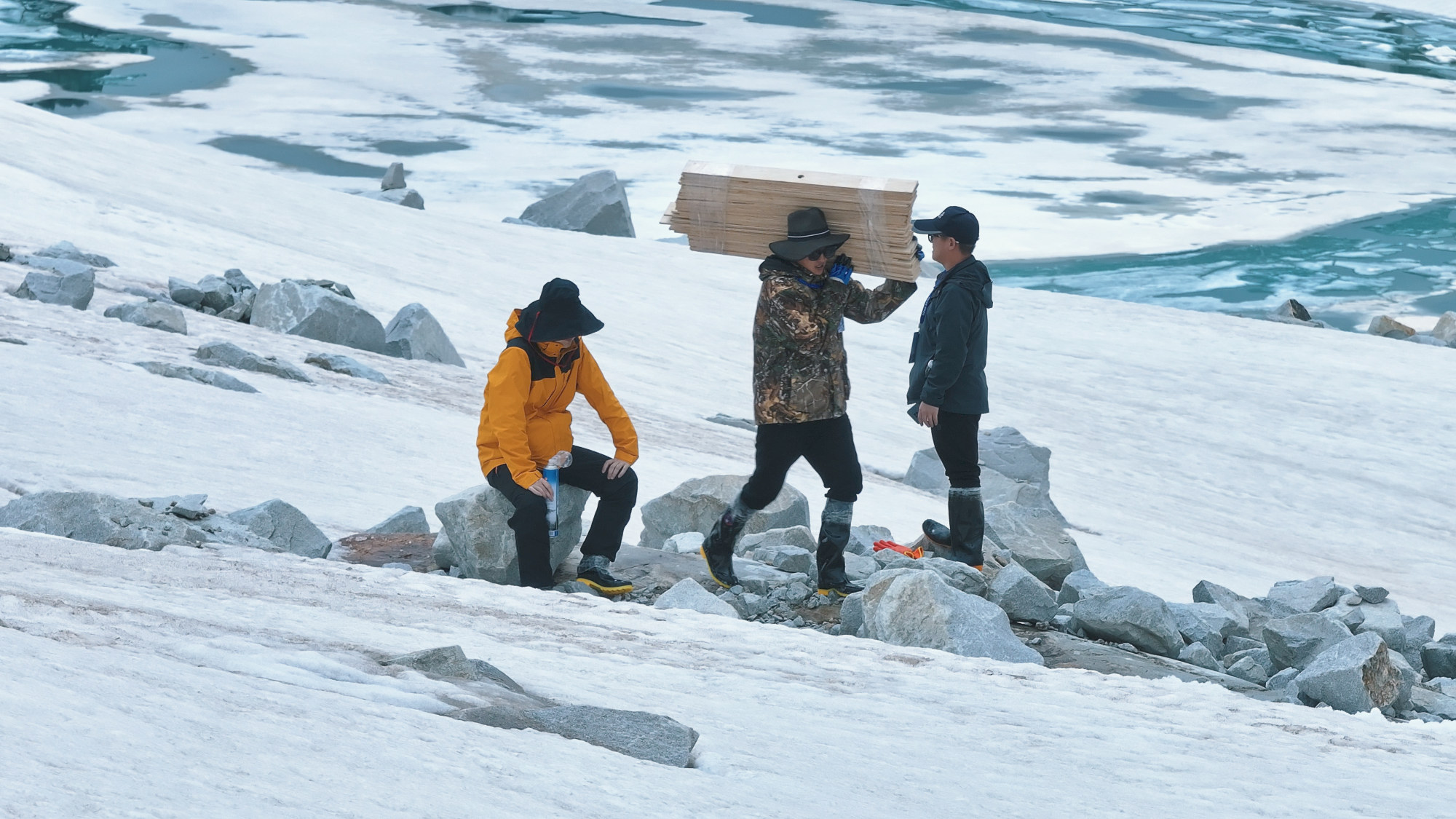
Climate scientists cover Sichuan’s Dagu glaciers with Tencent-sponsored hi-tech blanket to impede their melt amid global warming
- About 8,000 glaciers, or 15 per cent of the total in China, have melted in the past 50 years due to global warming
- Half of the Earth’s 215,000 glaciers could disappear entirely by 2100, with ramifications for the world’s supply of fresh water and ecosystems
A giant blanket has gone up over a portion of China’s most accessible glacier to slow its melting, as climate scientists race to stem their retreat amid global warming.
At the Dagu glaciers in the Tibetan region of southwestern China’s Sichuan province, thick rolls of white sheets now cover an area of over 400 square metres. Supported by poles and anchored with wooden boards, the sheets feature a newly developed film that achieves radiative cooling, which scientists hope can slow down the melting rate of Dagu’s glaciers.
“Our material is lighter in texture, water-repellent, more eco-friendly, and can be reused multiple times,” said the Nanjing University’s associate professor Zhu Bin, during a visit two weeks ago to the area. “The cost of it is also on par with traditional geotextiles.”

About 8,000 glaciers, or 15 per cent of the total in China, have melted in the past 50 years due to global warming, according to calculations by Kang Shichang, the director of the State Key Laboratory of Cryosphere Sciences at the Chinese Academy of Sciences, the country’s national science think tank.
Half of the Earth’s 215,000 glaciers could disappear entirely by 2100 – with ramifications for the world’s supply of fresh water and ecosystems – even if humanity can successfully curb global warming to 1.5 degrees Celsius, according to research published in the Science journal in January.

Evidence of global warming is everywhere, even at Dagu, which has become a popular tourist destination since the glaciers were first discovered in 1992 through satellite imagery. Thousands of tourists throng the area – six hours drive from Chengdu – all-year round, paying 180 yuan (US$25) each for a 15-minute ride in the world’s highest cable car to reach a viewing platform located 4,860 metres (15,944 feet) above sea level.
Only 11 glaciers covering 1.46 square kilometres remain at Dagu, from 17 spanning 5.6 square kilometres as recently as 1971, according to the Dagu Glacier Management Bureau’s deputy head Huang Shihai. The volume of the glacier, located by the Heishui River, has shrunk by more than 70 per cent over half a century, he said.

“When I first came here in 2006, the length and width of the glacier were still quite impressive,” said Huang, 43 years old. “I’ve almost never worn short-sleeve shirts before 2013, but nowadays I need to wear one during the hottest days in July and August.”
Glacier blankets are not exactly new. Swiss and Italian scientists have been using geotextiles and tarpaulins to cover glaciers in the Alps from the sun’s rays for almost two decades. The technique can reduce snow and ice melting by between 50 per cent and 70 per cent, according to Matthias Huss, the director of the Swiss Glacier Monitoring Network and a senior scientist at ETH Zürich in Switzerland.
Nanjing University’s material reflects more radiation and radiates more heat, Zhu said. In experiments carried out in 2021 at Glacier No. 1 at the Tianshan mountains in Xinjiang region, Zhu covered 200 square metres of snow with his new material. The result, published last February in the peer-reviewed Science Advances journal, found that the melt was reduced by 1.5 metres over 50 days, or three to four times better than traditional materials, Zhu said.

“Mitigation and adaptation are two major strategies to deal with climate change,” said Xu Hao, head of Tencent’s Carbon Neutral Lab. “Both are complementary to each other and very important.”
The material used at Dagu is even better, due to upgrades, Zhu said. When the northern hemisphere summer ends in September, his team will return to Dagu to remove the blanket and assess their result.
“The method has the potential to preserve ice locally, but not to fight against climate change,” said Huss. “It will never be possible to cover a large [glacier] or all glaciers, just to save them.”

Blankets, however advanced they are, are not “scalable” to save the entire glacier. “The cost of such an endeavour would be huge and completely uneconomic,” he said, adding that widespread and large-scale use could damage surrounding ecosystems.
These materials are best used to preserve the ice at specific locations where it is absolutely needed for snow-related tourism such as ski slopes. Cutting the emission of greenhouse gases is a far more efficient way of saving glacial ice, not to mention reducing all the other negative impacts of human-induced warming, he said.
“Local interaction does not stop glacier retreat,” Huss said. “There’s only one way we can save all glaciers, and thus avoid negative impacts: It’s by saving the climate.”


